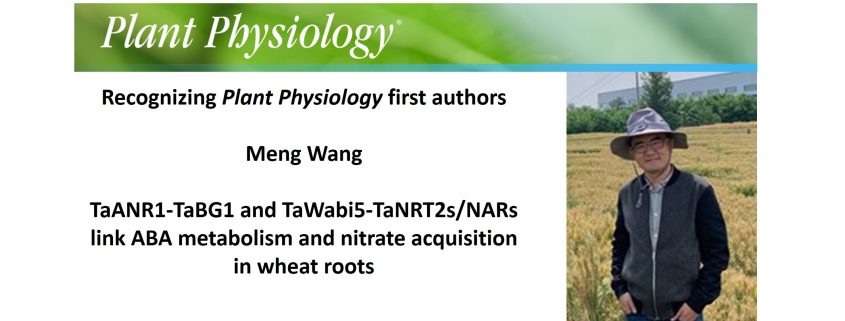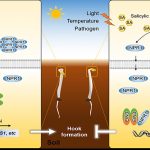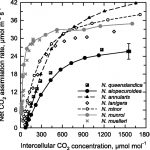Recognizing Plant Physiology authors: Meng Wang
Meng Wang, first author of TaANR1-TaBG1 and TaWabi5-TaNRT2s/NARs link ABA metabolism and nitrate acquisition in wheat roots
Current Position: Assistant Professor, Institute of Soil Science, Chinese Academy of Sciences
Education: Bachelor degree (2006-2010): Shandong University, China; Doctor degree (a master-doctor joint program, 2010-2015): Shandong University, China; Visiting student (2013-2014): The Gregor Mendel Institute of Molecular Plant Biology (GMI), Austrian Academy of Sciences
Non-scientific Interests: football, pop-music
Brief bio: Friends are always asking “Meng, why do you choose wheat? It is too difficult to study”. Indeed, bread wheat, a crop with a larrrrge (even five times larger of human’s) and compleeex genome, may not be ideal for an early-career researcher. Starting from 2010, this is the tenth year that I accompany with wheat. I begin to understand wheat a bit, and for example, without such a large genome, wheat may not be able to become a world-wide staple crop.
During these ten years, I got my Ph.D. degree supervised by Prof. Guangmin Xia (Shandong University, China), I then joint Institute of Soil Science, Chinese Academy of Sciences, and I was also elected as a member in Young Elite Scientist Promotion Program of China Association for Science and Technology. Some of my studies, focusing on improving bread wheat to adapt to environmental stresses, particularly the salinity stress and the nutritional deficiency, have been published on the Plant Cell, Trends in Plant Science, Trends in Biotechnology, Plant Physiology, etc. So, at least I believe that, bread wheat is not a bad choice.
姓名:王萌
当前职位:博士,现任职于中国科学院南京土壤研究所
教育经历:2006-2015年本硕博连读于山东大学生命科学学院;2013-2014年于奥地利科学院孟德尔研究所联合培养
兴趣爱好:足球,音乐
个人介绍:2015年7月博士毕业后,我入职中科院土壤所;2016年受日本“樱花计划”青年英才项目资助,我曾赴日短期访问;2017年我也有幸入选中国科协“青年人才托举工程”项目。近年来,我的研究工作主要围绕“盐碱化中低产土壤中小麦的营养高效性与逆境适应性”展开。在Plant Physiology的这篇最新文章上,我们报道了由ABA-GE快速转化产生的ABA可以作为硝态氮的信号“传导器”甚至“放大器”,通过激活根部特异TaNRT2的表达,提高小麦的氮素吸收效率。接下来,我们希望将上述发现与小麦育种和农业生产实际相结合,为提高小麦的氮素吸收利用效率提供一些可行的措施。




